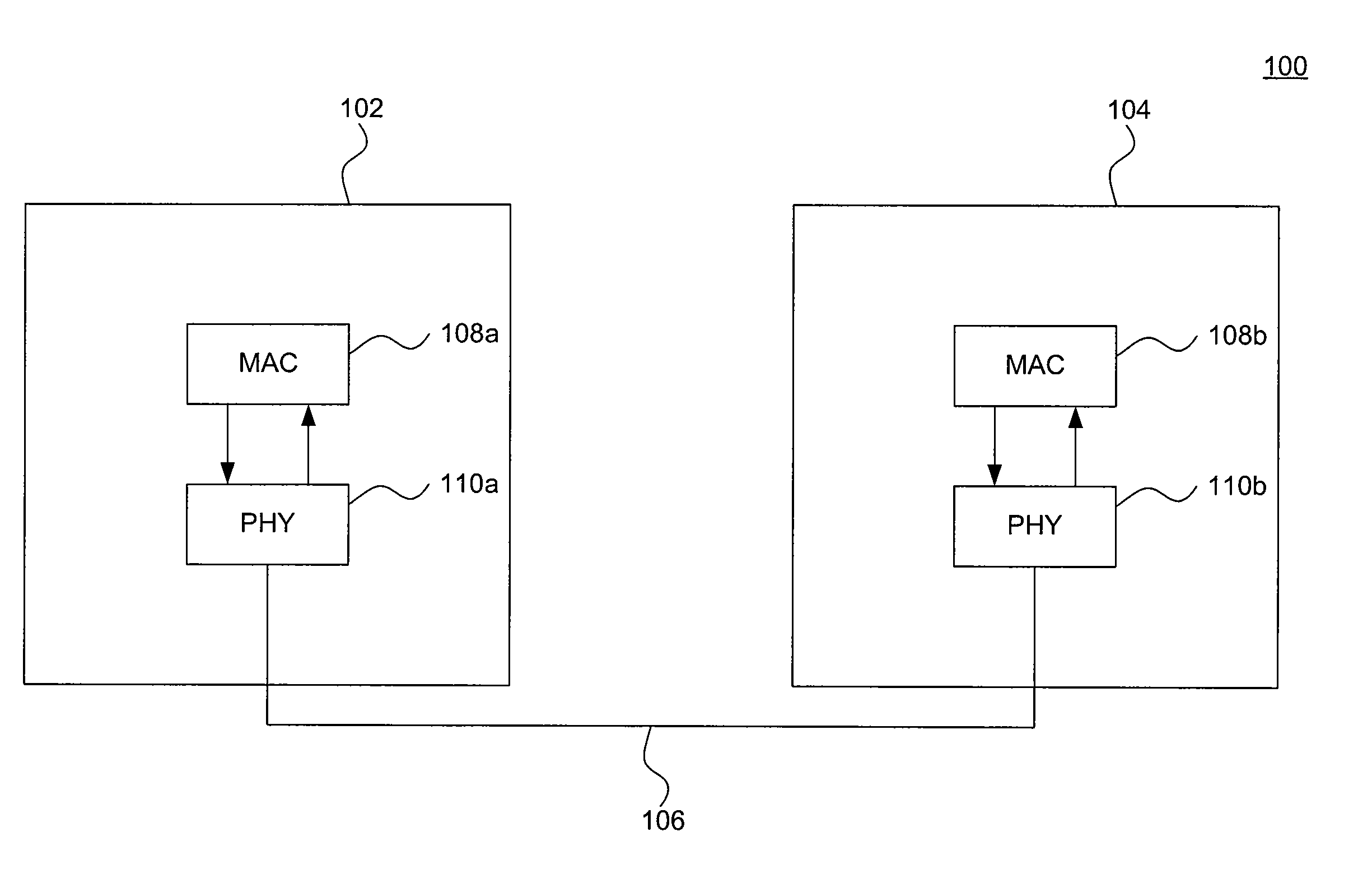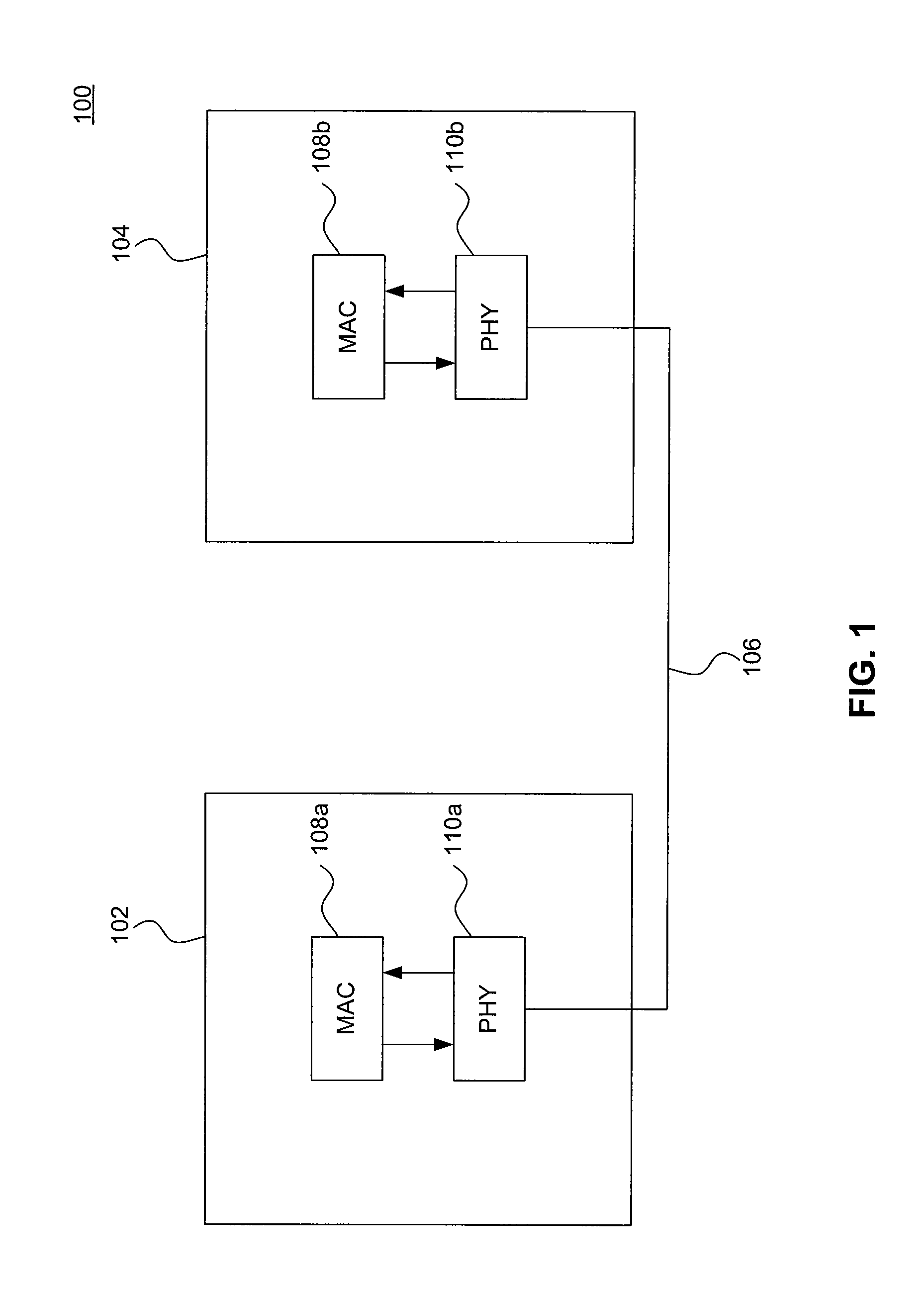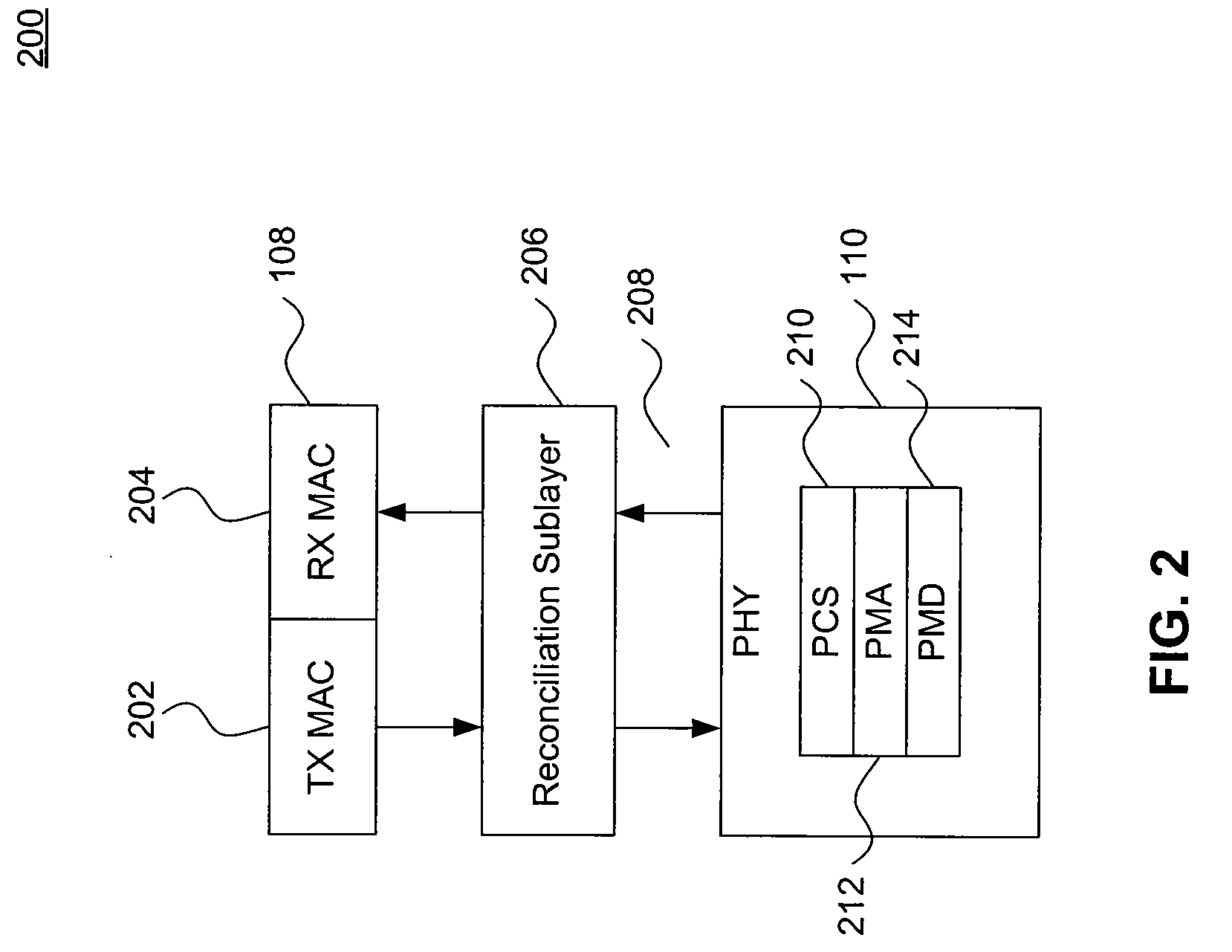Parallel Detection of Remote LPI Request and Send Zero Mode
a parallel detection and remote lpi technology, applied in data switching networks, high-level techniques, frequency-division multiplexes, etc., can solve the problems of digital energy detection, low detection efficiency, and low detection efficiency, and achieve reliable detection, low latency, and parallel detection robust and quick
- Summary
- Abstract
- Description
- Claims
- Application Information
AI Technical Summary
Benefits of technology
Problems solved by technology
Method used
Image
Examples
Embodiment Construction
Introduction
[0022]FIG. 1 is a block diagram that illustrates an example Ethernet network 100. As shown in FIG. 1, example Ethernet network 100 includes a first Ethernet node 102 and a second Ethernet node 104. The first and second Ethernet nodes 102 and 104 are connected by an Ethernet link 106. Ethernet nodes 102 and 104 may be any devices that support Ethernet. Ethernet link 106 may be any Ethernet compliant medium. Thus, example network 100 may represent any Ethernet configuration, including, for example, 10 Mbit / s Ethernet, Fast Ethernet (e.g., 100BASE-T, 100BASE-TX, etc.), Gigabit Ethernet (e.g., 1000BASE-T, 1000BASE-TX, etc.), and 10-Gigabit Ethernet (e.g., 10GBASE-SR, 10G-BASET, etc.).
[0023]The first and second Ethernet nodes 102 and 104 each includes a Medium Access Control (MAC) sublayer 108 and a physical interface transceiver (PHY) 110. MAC 108 is an Ethernet MAC as defined by the IEEE 802.3 Ethernet standard and implements the data-link layer of the Open System Interconn...
PUM
 Login to View More
Login to View More Abstract
Description
Claims
Application Information
 Login to View More
Login to View More - R&D
- Intellectual Property
- Life Sciences
- Materials
- Tech Scout
- Unparalleled Data Quality
- Higher Quality Content
- 60% Fewer Hallucinations
Browse by: Latest US Patents, China's latest patents, Technical Efficacy Thesaurus, Application Domain, Technology Topic, Popular Technical Reports.
© 2025 PatSnap. All rights reserved.Legal|Privacy policy|Modern Slavery Act Transparency Statement|Sitemap|About US| Contact US: help@patsnap.com



